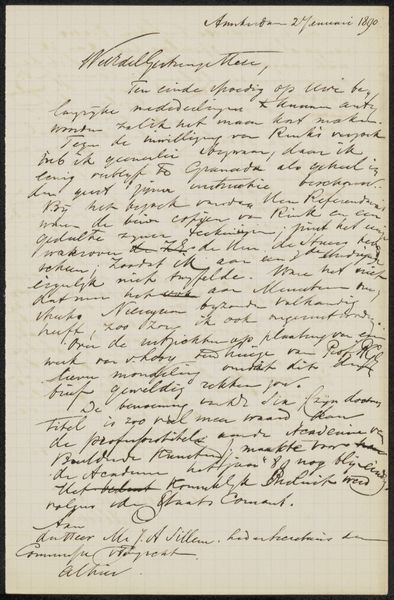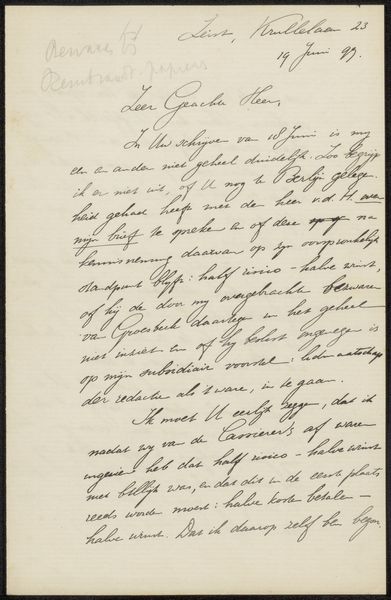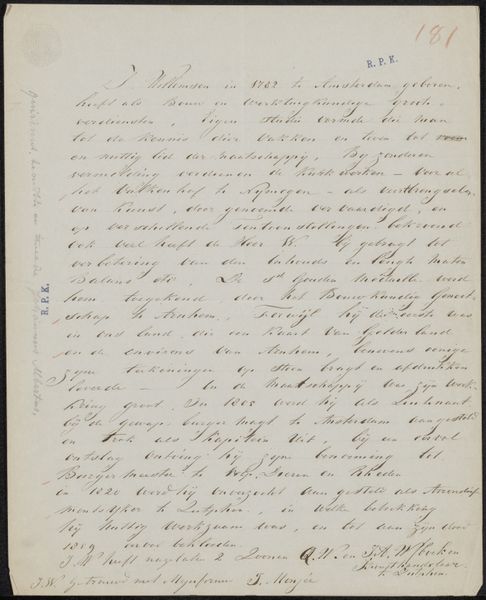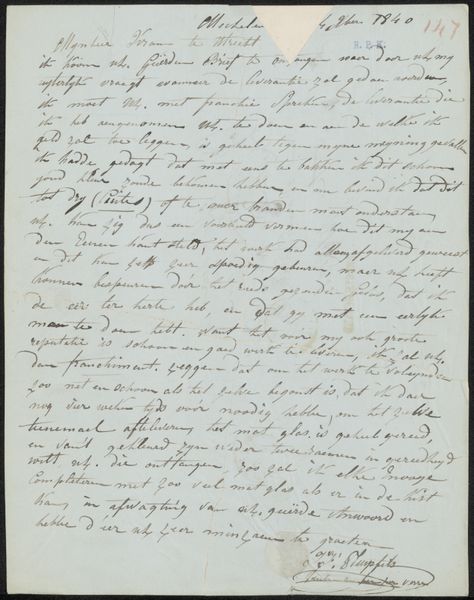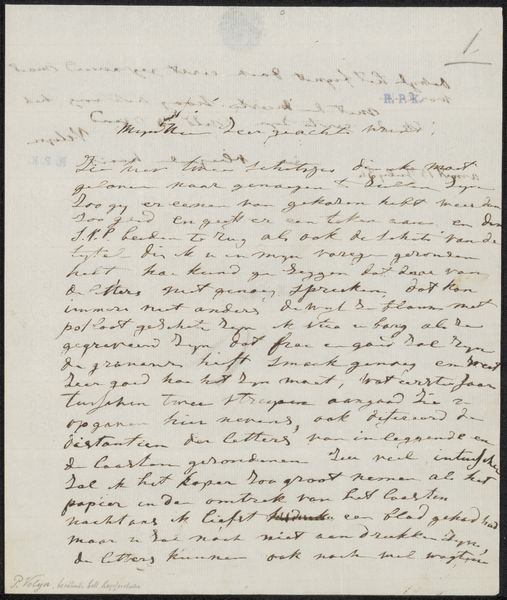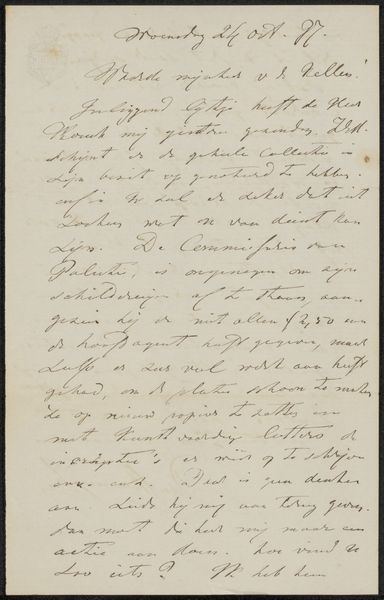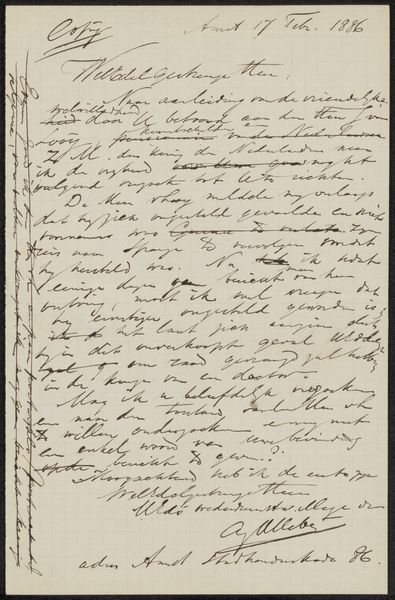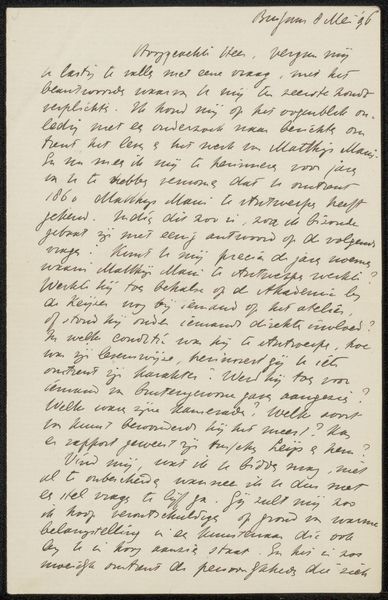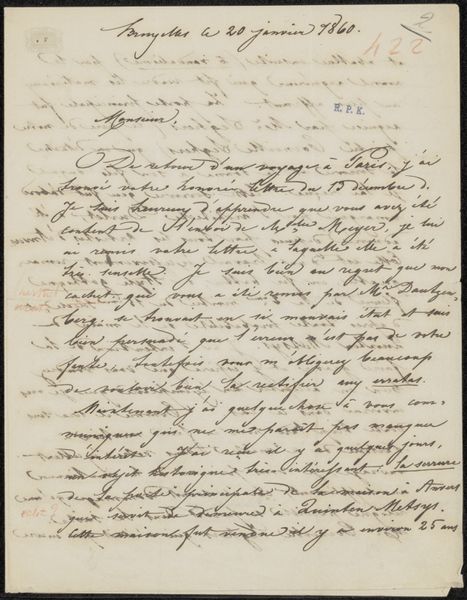
drawing, paper, ink, pen
#
drawing
#
paper
#
ink
#
pen work
#
pen
Copyright: Rijks Museum: Open Domain
Curator: I’d like to introduce Jacobus Ludovicus Cornet's drawing, “Brief aan Christiaan Kramm,” possibly from 1856. It resides here at the Rijksmuseum. The artist rendered this work in ink on paper, a rather intimate medium for such a public institution. Editor: My first impression is that it looks like an artifact. The composition and script present themselves almost like a vintage record. Curator: Exactly! The materiality speaks volumes. Ink on paper emphasizes the artist's direct connection to the work, allowing for very fluid gestures and fine detailing that you wouldn't get from larger-scale pieces. Consider, too, that letters served then as vessels of both personal and business discourse. Editor: Indeed. The means of production—pen and ink—underscore the labor involved in crafting even this small communication. How might the economic and social conditions of the time affect the availability and cost of materials and how, in turn, might these concerns impact an artist’s production decisions and workflow? Curator: Interesting point. The precision and control achievable with pen and ink suggest a conscious decision to elevate the humble letter. Looking at it more abstractly, the letterforms, taken separately and together, contribute a visual, rhythmic element and a unique perspective from the period. Editor: I’m intrigued by the letter as a format itself. It hints at an act of exchange and reflects communication systems. Were letters the digital communications of that time, where the quality and means of material were deliberately chosen? I can’t help but see the societal implications that influenced production choices like these. Curator: Viewing the artist’s labor within that network of 19th-century material availability allows one to analyze both production means and societal value of a communication format that is now effectively archaic. The detail makes visible both the physical realities and cultural importance of written correspondence from a bygone era. Editor: Precisely, and that reflection, while quite different from your aesthetic framing of Cornet's skill with rhythm and form, enriches my experience with this unassuming artwork. It bridges material craft and historical practice, bringing them directly into view.
Comments
No comments
Be the first to comment and join the conversation on the ultimate creative platform.

